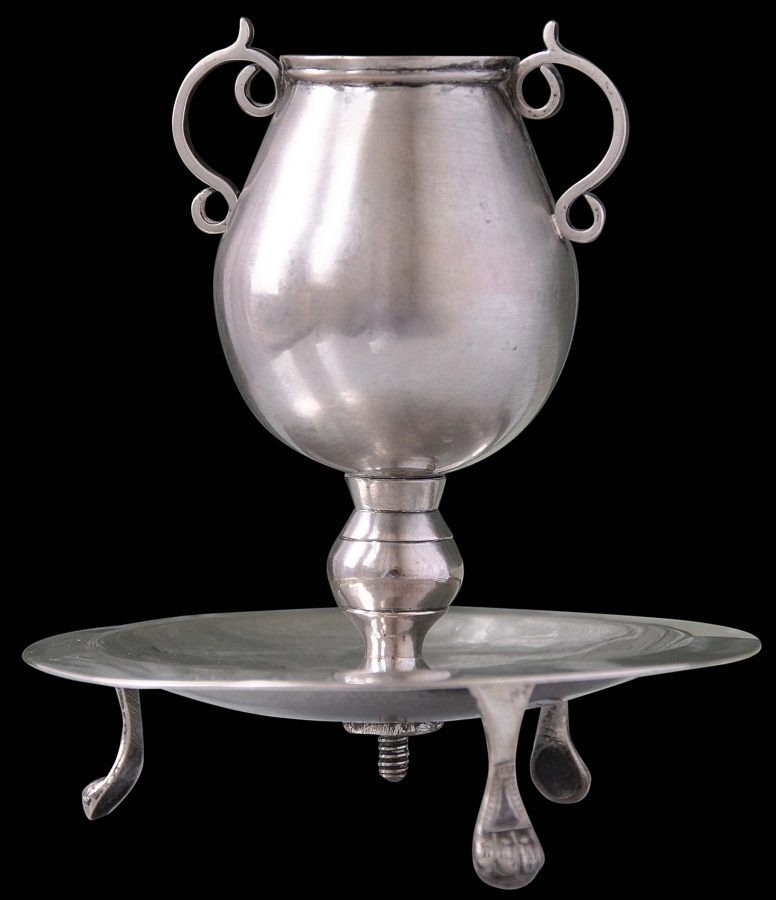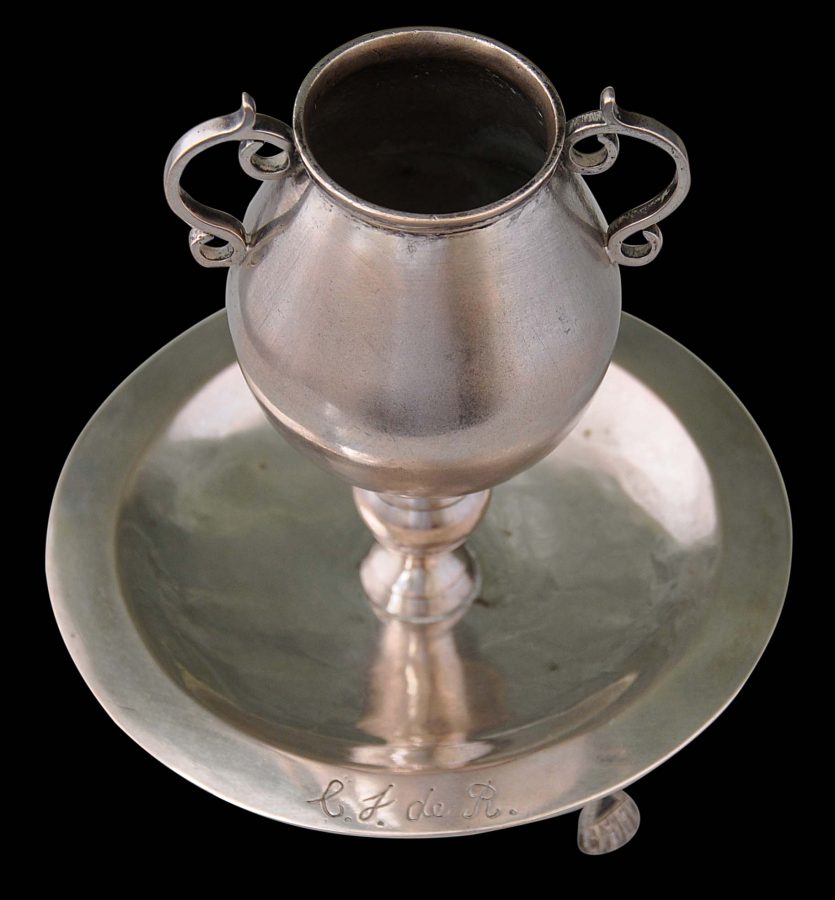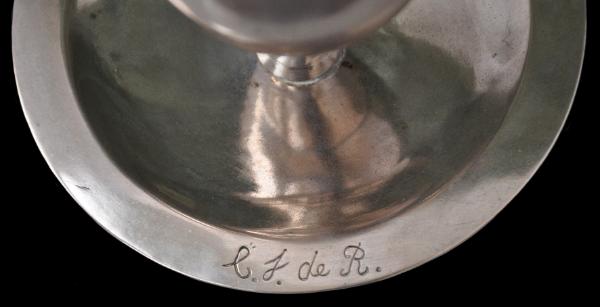Enquiry about object: 1547
Spanish Colonial Silver Mate Cup & Stand
Argentina 18th-19th century
height: 14cm, weight: 290g
Provenance
European private collection
This elegant mate cup and stand is of solid silver. The stand comprises a saucer with a wide, flat rim. It stands on three, short zoomorphic feet. The stem is short and of baluster form. Two elaborate ‘S’-shaped handles are on either side.
The rim of the saucer is engraved finely with the initials ‘E.F. de R.’ It is not unusual to see the marks of the owner on Spanish colonial silverware from South America. One reason for this is that as households with extended family members changed and formed, individuals wanted to be clear as to who owned what for the sake of inheritance.
Yerba mate is an important beverage that is indigenous to South America. Like tea or coffee, it contains a mild stimulant. A variety of utensils are used in its preparation and consumption. Wealthier households commissioned silver mate utensils. Yerba or hierba is a species of holly that is native to subtropical South America: northern Argentina, Paraguay, Uruguay, southern Brazil and Bolivia. The
leaves are used to make the herbal tea drunk from cups such as this. The leaves are steeped in hot water rather than boiled and sometimes sugar is added.
The term ‘hierba’ is Spanish for grass or herb. ‘Yerba’ is a variant spelling more common in Argentina, Uruguay and Mexico. ‘Mate’ is from the Quechua
language and means ‘cup’. So yerba mate literally is a ‘herb cup’.
The style of the mate cup suggests an 18th-19th century dating and an Argentinian provenance.
The cup’s plain, unadorned simplicity enhances its under-stated elegance. It is in excellent condition.
Latin America/Latin American
References
Taullard, A., Plateria Sudemericana, Ediciones Espeula de Plata, 2004.




